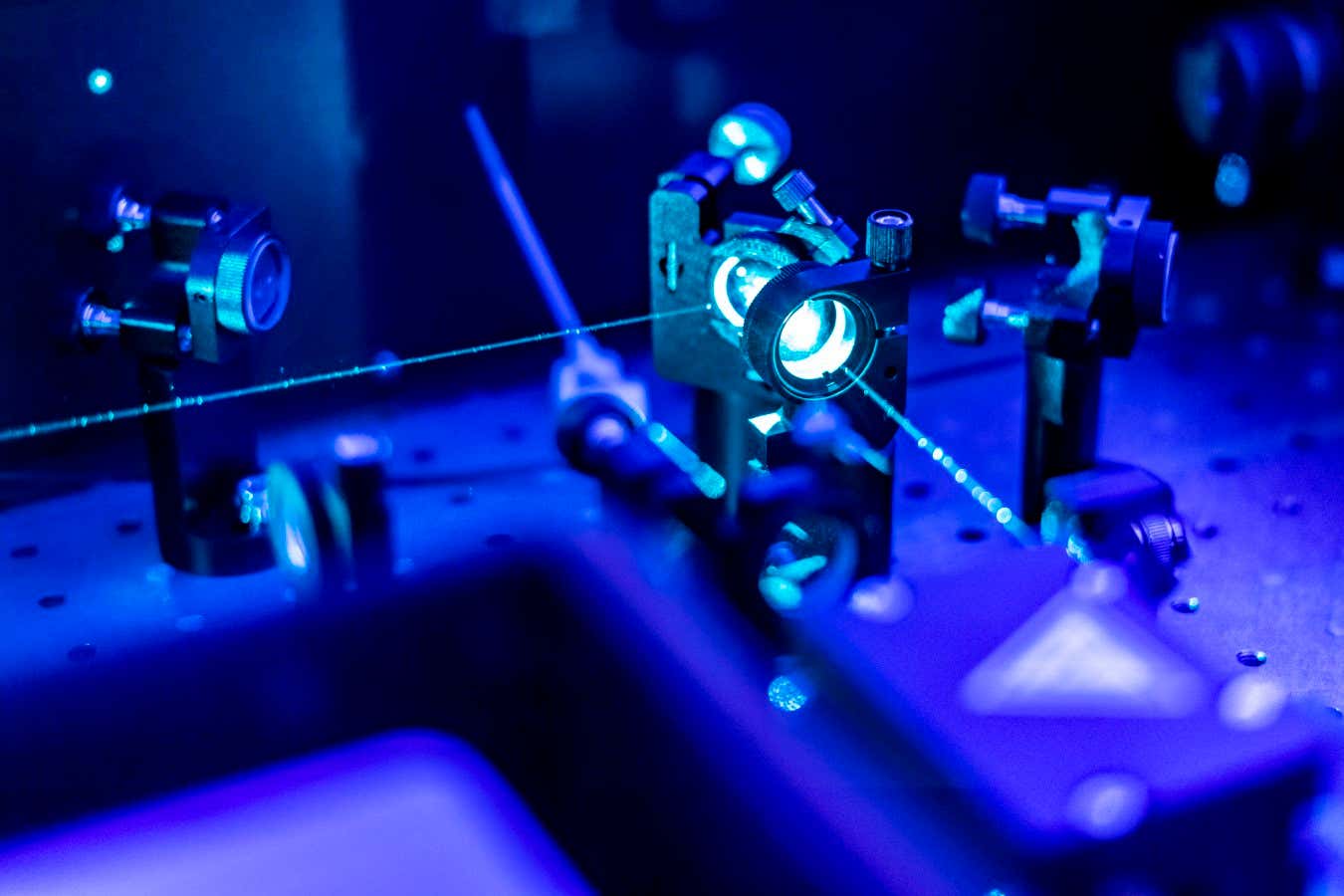https://arxiv.org/abs/2409.03680
The actual content. No paywall.
This part seems to be the gist of their conclusion:
Specifically, we measure mean atomic excitation times ranging from (−0.82±0.31)τ0 for the most narrowband pulse to (0.54±0.28)τ0 for the most broadband pulse, where τ0 is the non-post-selected excitation time, given by the scattering (absorption) probability multiplied by the atomic lifetime τsp. These results suggest that negative values taken by times such as the group delay have more physical significance than has generally been appreciated.
In more plain English, the “group delay” refers to how signals (light in this case) are delayed while passing through a medium. Physicists have found that some materials with certain conditions (in this example extremely cold gas) can have negative group delays which suggests that light would take a negative amount of time to travel through them.
It seems to suggest that as light is passing through a medium and exciting electrons (which normally slows it down), it’s possible for atoms that the light hasn’t quite reached yet to get excited BEFORE the light actually gets there, which would lead to light potentially leaving the medium before it entered.
Before this experiment, this was just a theory that hadn’t been tested, but now there’s experimental proof that the negative group delay values do actually mean light leaves the medium before it enters if conditions are right.
Quantum physics makes my mind do loop-de-loops.
People that study quantum physics for a living feel the same
I’m too high for this
I think I’m too sober for it.
Well, stop that.
I know I am, and the bar closes in 7 minutes. Time to order several shots and try to understand it again.
So If the atomic resonance is right it might be likened to the bow wave of a ship being seen before the ship appears?
This seems really neat. So like when you shine light through things like water or glass or air the energy of the photons actually kinda get absorbed by the molecules and transmitted by them resulting in a slowing down a tiny bit, usually. It seems like they may have found some combinations of photon wavelengths and atomic resonance frequency that results in speeding up a tiny bit instead of slowing down
On a related note three brown one blue has a neat video explaining what phase shifting is and kind of why it happens https://youtu.be/KTzGBJPuJwM
So when the pulse of light is at the same frequency (wavelength) as the atomic resonance of the super cooled matter (the frequency of the atoms natural shimmy, which in a super cooled state act as a single, massive atom), the time (when measured as the amount of quantum state change as a result of the photon passing through the atomic medium) in which it traverses the atom is less than what it should be, indicating that the photon was not slowed in any way through it’s interaction with the atom(s).
…is that right? did I do an understanding?
So basically the first real recorded backwards time travel
No. The pulse still took longer than light through vacuum. That’s the limit that needs to be broken for any causality violations to happen and that’s the limit that can’t be broken.



